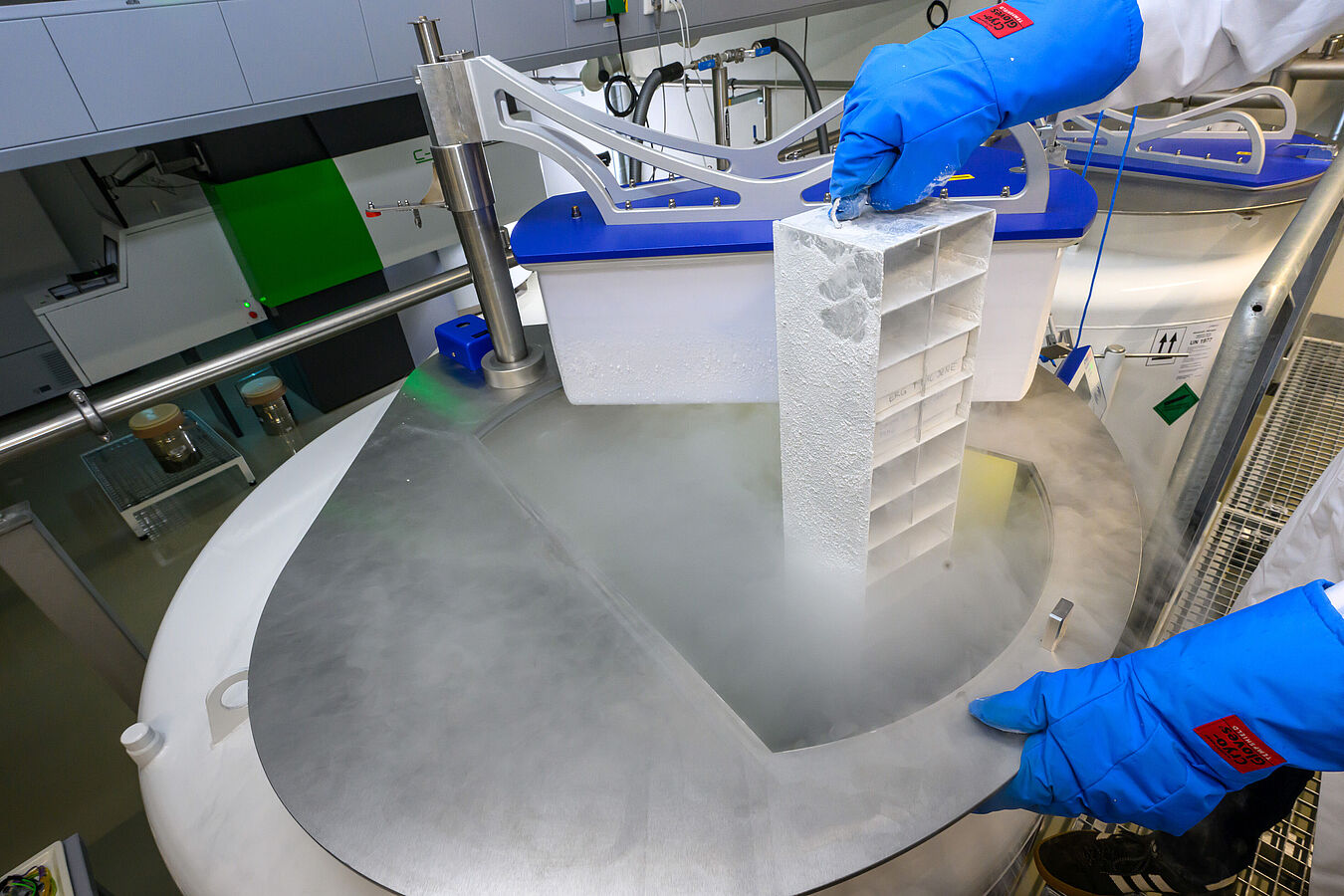What role do certain lipids, known as phosphoinositides (PIPs), play in obesity and other metabolic diseases?

Biological samples are taken from a nitrogen tank. | Copyright, ©DIfE, D. Ausserhofer
This is now being investigated by scientists from the Leibniz-Forschungsinstitut für Molekulare Pharmakologie (FMP) in Berlin, the German Institute of Human Nutrition Potsdam-Rehbrücke (DIfE), and the Leibniz-Institut für Analytische Wissenschaften (ISAS) in a joint project.
The FMP, DIfE and ISAS have raised almost one million euros from the Leibniz Association as part of the "Leibniz Cooperative Excellence" program, in order to study the role of phosphoinositides in a healthy organism and in metabolic diseases such as type 2 diabetes in more detail. The project will focus on a key aspect: it is assumed that these phospholipids transmit vital, food-dependent signals to cells and organs, such as whether the body is full or hungry, or whether it should switch to anabolic (building up) or catabolic (breaking down) metabolism. "We believe that PIPs play a key role in communication between cells, but how these processes work is barely understood," says project leader and FMP director Prof. Dr. Volker Haucke.
Impaired metabolism due to altered PIP signaling?
The starting point for the project were investigations into a genetic muscle development disorder. FMP researchers showed that due to a missing or malfunctioning lipid phosphatase, fats could not be incorporated into the metabolism of mitochondria - the cell's powerhouses. This rare genetic disease leads to death in childhood. Meanwhile, DIfE had linked the same gene to obesity. The researchers now aim to examine whether a shared fundamental mechanism - possibly altered PIP signaling - underlies both extremes, and to test additional hypotheses. "We research from molecule to disease," emphasizes Volker Haucke, "because we want to understand what changes in metabolism occur depending on food availability."
New analytical methods to decode signaling pathways
While FMP focuses on the molecular and cellular level, DIfE will conduct preclinical studies using two mouse models. ISAS, in turn, is responsible for developing the missing PIP analysis methods. The researchers will first create mass spectrometry methods to analyze the frequency and identity of PIPs in cells and tissues, for instance. "So far, the lack of analytics has hindered a better understanding of PIP signaling pathways," explains Prof. Dr. Sven Heiles, head of the Lipidomics research group at ISAS. Applying theirnew analytical techniques, the scientists aim to investigate the physiological role of changes in cellular PIP levels due to changes in nutrient supply in selected cell systems. The consortium will then use these findings to further study PIP metabolism in mouse models under normal and increased nutrient supply conditions.
"We are aware that we are dealing with very complex questions here," says Prof. Dr. Annette Schürmann from DIfE. "But we hope that this project will help us understand molecular processes following fasting and food intake and, in the long term, assist many people with obesity."
The PIPMet project "Phosphoinositide-mediated nutrient response in metabolic disease" has started in February this year and is expected to run until July 2027. Both early-career and experienced researchers are involved.






